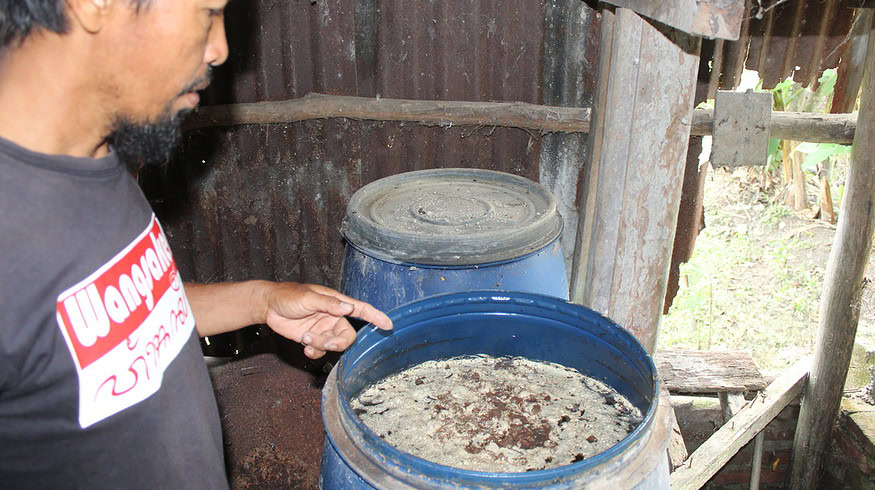Cirebon farmers embrace organic solutions amid fertilizer challenges

In the verdant landscapes of Cirebon Regency, West Java, a quiet revolution is taking place. Amid fluctuating prices for chemical pesticides and reduced allocations of subsidized fertilizers, a group of farmers is charting a path towards independence and sustainability through the use of organic fertilizers and pesticides.
Rojai, a prominent figure in this movement, stands beside a drum of fermented cow urine in Tegalkarang Village, revealing how what many consider to be waste is, in fact, a valuable resource in his arsenal against declining soil fertility. This liquid organic fertilizer not only enhances plant growth but offers a cost-effective alternative to chemical options, with Rojai selling it at Rp 20,000 ($1.27) per liter — a fraction of the cost of its chemical counterparts.
As subsidized fertilizer becomes scarcer — farmers now receive only 70 kilograms per hectare compared to the previous allocations well over 100 kilograms — the shift towards organic methods has gained momentum. Rojai and his peers have turned cow manure into a powerful compost fertilizer, packaged under the brand Supersonik, and available at a mere Rp 2,000 ($0.13) per kilogram.
This organic approach is not limited to fertilizer. In the face of reduced chemical pesticide availability, these farmers have developed pest control methods that rely on the natural properties of cow urine and compost, demonstrating a resilience and ingenuity that keeps their crops thriving. Rojai’s group, Ternak Jaya, has become a beacon of sustainable farming, even establishing a biological control agent laboratory to explore natural solutions to pest attacks.
The results speak for themselves. Rojai’s harvests have seen significant increases, with rice yields climbing from the usual 6-7 tonnes per hectare to an impressive 10.3 tonnes. This success is underpinned by a broader philosophy that sees organic farming not just as a practice but as a principle of environmental stewardship and community resilience.
However, challenges remain. Access to organic fertilizers and pesticides is not as widespread as that for chemical alternatives, and issues of land ownership complicate the transition to organic methods for some farmers. Yet, there is hope. Local initiatives and government support are emerging, aiming to make sustainable agriculture a cornerstone of Cirebon’s agricultural landscape.
As farmers like Rojai demonstrate, the path towards agricultural independence through organic farming is both viable and vital. Their efforts illuminate a future where sustainability is not just an ideal but a practical reality, offering lessons in resilience and innovation for farmers everywhere.
Enjoyed this story?
Every Monday, our subscribers get their hands on a digest of the most trending agriculture news. You can join them too!
















Discussion0 comments